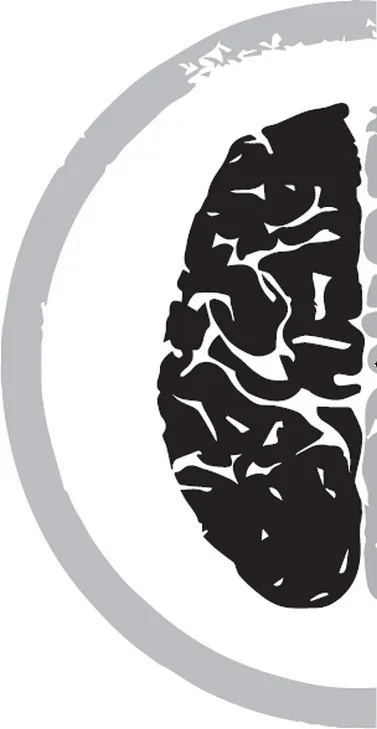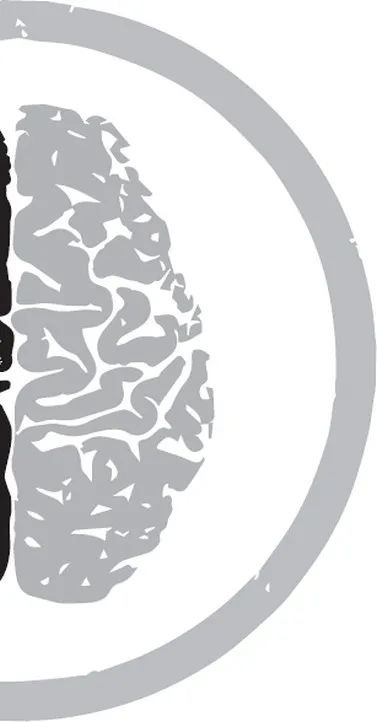![]()
Left Lobe
There is nothing new under the sun
(KING SOLOMON, ECCLESIASTES 1:9)
![]()
Introduction
Late summer.
I held out my iPad at arm’s length, partly to block the dazzling sun, partly to help me squint-focus on a tweet by a self-proclaimed social media guru. Discussing trust, he suggested that whenever possible, I should include advertising copy along the lines of: ‘Trust me on this’.
…Why should I, or anyone else for that matter, believe him?
You live in a world where authenticity is fluid and reputations are dismissed, dismantled and demolished in the wave of a finger. The fundamentally new ways in which thoughts, feelings, facts and insights are broadcast has had an irreversible impact on cognition.
In his book Orality and Literacy: The technology of the word, the Reverend Father Walter Jackson Ong PhD, a professor of English literature, cultural and religious history, observed:
Writing restructures consciousness.
So it is that immutable repute becomes mutable. The web’s social spiderlings, including Google+, Twitter, Pinterest, Facebook, as well as their various camel case cousins, have conspired to make terms such as ‘information overload’, ‘attention deficit’, ’paralysis of choice’, ‘cognitive surplus’… collective alibis for brands to deliver superficial promises, explanations and value statements.
Since the collapse of the Twin Towers, followed by a global rise in cynicism over the practical as well as ethical capabilities of universal leadership, a gargantuan gap between people’s expectations and what brands can actually supply has emerged in both developed and developing economies.
It’s all down to a continuous general decline in brand trust. Whereas organizations were once traditionally valued by GDP and income, today a brand’s meaning and relevance to consumers is equally as important when assessing value. Is it both emotionally as well as logically practical? Does the consumer feel smarter, more confident, respected? Is a product or service simply another ‘me too’ commodity, or when considering the brand’s reputation, does the consumer think, ‘us two’? (Source: HAVAS, June 2013. Also see Right Lobe, ‘Life can be pulled by goals’, page 283).
Too often on reading, hearing or viewing a commercial, social or political message, people are confronted by a verisimilar brand whose wholesale communication makes it difficult to distinguish between gospel fact and gossip fiction. In turn, modern PR and marketing brand specialists are forced to pluck out authentic threads of lucidity from an intricate tapestry of grey acrimony and white indifference.
The piece on my iPad took me back 30-odd years. I was a rookie copywriter. My boss similarly advised that, whenever applicable, I should lace copy with words and phrases such as:
- professional
- trust
- guaranteed
- proven
- promise
…Professionals promised that any combination would win trust.
Before I first tackled awkward brand reputation predicaments including, for example, clients allegedly being caught breaking into the New York offices of competitors, among other places, I worked for American Broadcasting Company News.
ABC’s European anchor was a wonderful man called Peter Jennings. Teams covered everything from embassy sieges to corporate battles with unions. Depending on a day’s news I was the runner cum trainee editor, cum assistant researcher, cum junior sound technician, cum post boy, cum tea-maker. Even occasionally (once almost disastrously) I manually ran Peter’s live-on-air teleprompter (but that is a tale for another book).
From dependable nightly news reports to emergency press conferences, product launches, advertising, TV and radio commercials, lectures, publishing, corporate videos and social media, throughout my career I have witnessed the importance of assurance and authenticity when devising political, commercial and social visions or missions.
Direct marketing agencies taught the craft of copywriting that spoke directly to consumers, especially when supported by testimonials addressing classical Regulatory Fit Theories (see ‘Something tells me I’m into something good’, page 249). Technical details of branded products or services were balanced with consumer (business-to-business, or otherwise) significance. Leaflets, letters and brochures put forward cases for investing time, money or confidence in brands.
Event agencies demonstrated the power of designing immersive and enthralling consumer experiences whose narratives evoked drama and curiosity.
‘Buy One, Get One Free’ sales promotions drew on the psychology of goal pursuit and reward.
Advertising agencies like Saatchi and Saatchi revealed the witchcraft of empathetic creativity: the importance of storytelling.
PR agencies instilled the rule of ‘who you know is sometimes more important than what you know – unless what you know is about who you know’.
Social media agencies introduced building relationships through website content that pressed ‘want’ and ‘need’ buttons.
Global lecturing revealed the universal language of capturing heads and hearts through engaging face to face.
Working with international news media as a brand commentator introduced the craft of delivering a succinct bulletin for online and offline distribution.
Decades ago, press releases habitually incorporated upwards of 250 words of copy. Each was driven by facts, which pulled along meaning. Today, e-mails lengthier than 50 words or clips longer than four minutes constitute the equivalent of War and Peace (minus its drama and compassion).
The 21st century’s first global recession led the press to address the dreads and idiosyncrasies of a new demographic audience that included a shrivelled-down middle class, sopping wet from the storms of a global economic tsunami.
Studies by UC Berkeley psychologist Dacher Keltner suggested that a vast swathe of 18- to 33-year-olds had lost faith in traditional belief systems. They were less likely to marry, vote, follow a religion or, assuming they could find one, stick to a job. Official 2014 government figures showed that Britain’s richest 1 per cent had accumulated as much wealth as the poorest 55 per cent of the population put together.
Eighteen months earlier, Professor Danny Dorling of the University of Oxford, an expert in inequality, said:
The last time the best-off took as big a share of all income as they do today was in 1940, two years before the publication of the Beveridge Report, which became the basis of the UK’s welfare state after the Second World War.
To drive need, brands created artificial market segments within the post- storm middle classes. Bifurcation separated the middle class into high-end consumers and low-end bargain hunters. The newly created markets were tempted into paying premiums for ‘platinum’ or ‘gold’ packaged versions of commodities and basic provisions.
Windows allowing light into the global library of knowledge shrank. At first it was laptop screens, finally wristwatch lenses. Meanwhile the information contained within became stubbier. With less time for the majority to see the bigger picture, brand stories demanded only clipped bursts of the briefest consideration from consumers, leaving practical implications of messages wide open to interpretation.
Taking things into their own hands, ‘Generation C’ communities became cottage experts, commentators and social journalists curating hubs of specific interests for time-poor information rummagers. A fleetingly scanned picture on a site like StumbleUpon, Pinterest, Tumblr, or a six-second Vine, was meant to imply more than a thousand words.
Following decades of political wars, economic catastrophes, government frauds, cultural feuds, corporate fiascos, the loss of social and cultural identities, product recalls and vertiginous leaderships, people became solipsistic. Preferring to put their trust in visceral convictions than publicized promises, man had become homo hominus lupas est – ‘man is wolf to man’. Compared with their parents, millennials (born between the early 1980s and approximately early 2000s) are far less likely to identify with traditional brands, political parties or formally affiliate with a religion – key indicators of an independent streak – according to the Pew Research Center.
During the Prom years of the teenage 21st century, brand messages trickled their way into insipid streams of consciousness, with information rummagers enduring endless political, theological and commercial flotillas of Balaam-branded false prophets claiming to walk on water.
Processing a ceaseless stream of advertising messages affects the part of the brain particularly concerned with decision-making processes – the medial prefr...


